Knowing the basic facts of first aid can help you save lives, which is a set of tips that are very important in the life of any individual and that makes them able to save the lives of individuals through first aid and emergency care to save human life, including Your life. When you find yourself in the middle of an emergency, it is best to learn how to evaluate the situation, what you can do to help out first aid, and even find out the difference between what helps and what does not help. Let’s just say that a simple gauze board is usually more effective than a tourniquet when dealing with bleeding.
We want you to be up to date on how to take care of yourself, so we’ve prepared some quick first aid tips that can save your life one day!
11 – Poisonous snake bites
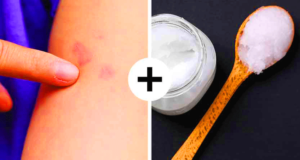
© Depositphotos.com
In most cases, TV shows and movies, when someone bites a venomous snake, their first reaction is to get rid of the poison. Realistically the poison has already entered the victim’s bloodstream, so it won’t really help.
This is what we need to be aware of first aid, and we have a first aid kit, which includes a set of triple bandages and disinfectant wipes to clean. When you get a snake bite, the most important thing is to relax.
You need to maintain your heart rate to slow the spread of poison. Similarly, taking painkillers can weaken the blood and make the venom work faster. In this case, you will need first aid, which concerns the education of the Red Cross first aid community.
If you need to move for help, go to the nearest red cross for the first aid, be sure to walk, not run, in order to stay calm. If you can, apply coconut oil to the wound, using antiseptic wipes, as it can help fight bacteria and parasites, and bandage the area, so you can reach the nearest red cross for first aid.
10 – Fractions
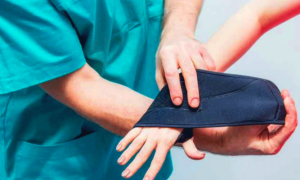
© shutterstock.com
When it comes to fractures, by first aid, do not try to straighten the wound, but maintain the stability of the limb and immobility using a splint and stuffing in the nearest red cross of the first aid kit, the important thing is to keep it in the same position, and wrap it with triangular bandages, although the fracture It can be a simple dislocation or twisting, but you should always seek medical treatment to make sure that the injury is not more serious or even avoid causing more injuries, warp the broken organ and recover it floating, and do a scan at the Red Cross for first aid until the fracture heals.
9 – Sudden heart attacks
When it comes to sudden heart attacks, first-aid intervention helps reduce the damage caused by a sudden heart attack. Chewing aspirin can help because it will prevent the appearance of platelets that cause blood clots, which prevents arteries from reaching. When taking aspirin, it is important to take small doses and chew pills instead of swallowing them or taking them with water, as this will help them work faster.
Try to contact the emergency services as soon as possible, which is the Red Cross First Aid Wild First Aid, which provides the necessary first aid by the availability of first aid means of triple bandages, antiseptic wipes, and first aid boxes as well as first aid kits.
8 – Wounds
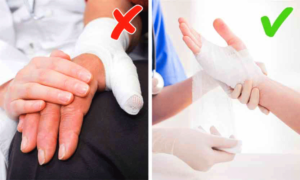
© Depositphotos.com
Whenever you are dealing with a wound, you should be familiar with first aid, you should always try to raise it from your heart level. This soothes swelling and helps drain fluids away from the area.
If your wound is on your hips or buttocks, lie down and lift it with pillows. If you are unable to lift the wound, try to keep the wound at the level of the heart or as close as possible.
7 – Bee stings
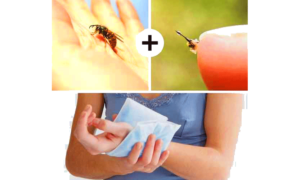
© Depositphotos.com
If you get a bite from the bee, you need to remove the adhesive. Reduces the poison, the most important thing is timing. You need to try to remove the adhesive as quickly as possible, which is a first aid and emergency care, whether you scratch it or remove it with tweezers or pull it out.
When you lose a Stinger bee, it emits a smell that attracts other bees to the area and is likely to get you out of defense. Once the Ranger is removed and left the area, wash the wound and squeeze cold using triple bandages and antiseptic wipes.
If you are allergic, try to keep a doctor or EpiPen at your fingertips, and call emergency services as soon as possible, from a red cross for first aid and Wild first aid, using the necessary equipment of first aid boxes for sterilization and medication.
6 – Eye injuries
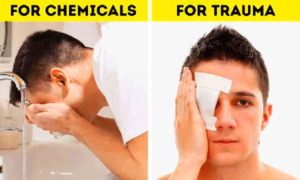
© Depositphotos.com
When you get hurt, usually the first thing you should do is clean the wound. By first aid, however, when you injure your eyes, the most important thing is to cover your eyes and then seek help; by triple dressings and antiseptic wipes.
By trying to clean your eyes yourself, you can risk harming yourself even more, which can cause permanent damage or blindness.
The main exception to this rule is when chemicals enter your eyes, in which case you should wash them with water immediately, and trace them by using first aid boxes containing triple bandages and disinfecting wipes for sterilization.
5 – First-degree burns
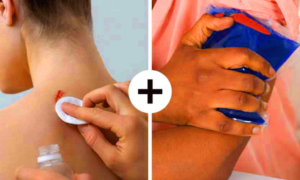
© livekijken.nl
First-degree burns, which are common occurrences, must be prepared by learning how to provide first aid in case of first-degree fire, also known as superficial burns, only affect the top layer of your skin.
While they may be painful, they are not dangerous. To treat them, rinse the wound with lukewarm water, using antiseptic dressings. Although ice water may appear more pronounced, it may cause tissue damage. After cleaning the burn, place an ice pack or cold compress. Using butter or grease is an old folk remedy, putting it on the burn and wrapping it with bandages to fix it, but this can cause more damage to the wound because it slows the release of heat, which enables the rot to rot.
A paste made from mixing water and baking soda can also help release heat from the burn and enter air into the skin to heal quickly.
4 – Jellyfish stings
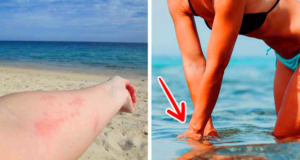
© freepik
Nothing can spoil a nice day on the beach like a jellyfish sting, which is considered a serious sting, you can give first aid, try rinsing the wound with salt water. You can also rinse it off with hot water or vinegar, or cover the wound with baking soda and water solution and triangular bandages. Activated charcoal can also help extract jellyfish poison. You may have heard of a common urban myth that urine can be used to treat jellyfish stings. Realistically, urine usually does not contain enough acid to resist poison. While there are claims that urine can reduce pain, the urine circulates the body’s microbial group, which makes the jellyfish bite-infested and infested with a place where it is best avoided. Hot water is equally effective to reduce stinging pain. To heal.
3 – Obstructive breathing
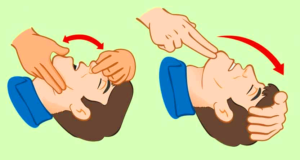
© shutterstock.com
If a person stops breathing, a blockage of the airways usually occurs. To open the airway, tilt the head, lift the chin, and place your hand near the top of the head or forehead. Alternatively, you can do what is called a “jaw thrust” by placing your fingers under the jaw and pushing the lower jaw upward, without moving the neck, to open the mouth. This raises the tongue away from the airway and helps reduce air blockage. Then, tilt the head until the air passages are opened.
2 – Splinters
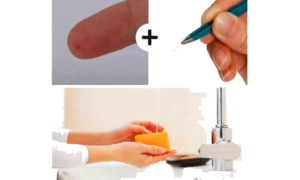
© freepik
The splinters are full of germs and can easily infect open skin, so using first aid tips, always remember to remain sterile when handling them. If you have a fragment that is completely embedded in the skin, you should first clean the area with a disinfectant, triangular bandages, disinfecting wipes, then expel the splinter with a sterile needle with boiling water. Once removed, you can remove the splitter forceps. After that, wash the area with soap and water using disinfecting wipes, triangular dressings, and you should continue the sterilization process daily, at the nearest red cross for first aid or land for first aid.
1 – Scars

©brightside
When you get hurt, you may worry about the appearance of a bad scar, but there are some actions you can take to prevent the appearance of a scar. Based on first aid and rehabilitation, baking soda has antiseptic properties that help prevent the scar from forming, which can remove sclerotic scabies. Prevents infection. When treating a scar using baking soda, triangular bandages, and cleansing wipes, it is also important to allow the wound to be exposed to the open air. Besides, baking soda can also be mixed with water to form an antiseptic, applied to the scar using triangular bandages and disinfecting wipes to sterilize the scar. In the absence of hospitalization, the nearest red cross for first aid or first aid land should be attached.
Your reward for reading tips:
We give you tips for removing bandages First aid is not only important when it gets hurt first but also during the healing process. To keep it particularly safe, try dissolving the adhesive by covering the area with baby oil, rubbing alcohol, or even warm water. You can also freeze the area using ice cubes. Despite the temptation to rupture, it is also important that the wound removes it slowly because you risk tearing a scab or even reopening the wound. If you are unable to do so, you should head to the nearest red cross for first aid or first aid land, to remove the bandages from the wound. What simple first aid tips do you use when damaged? (Page 11 / 11) Join us Your advice in the comments!


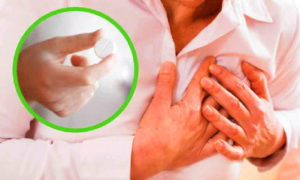
Leave a Comment